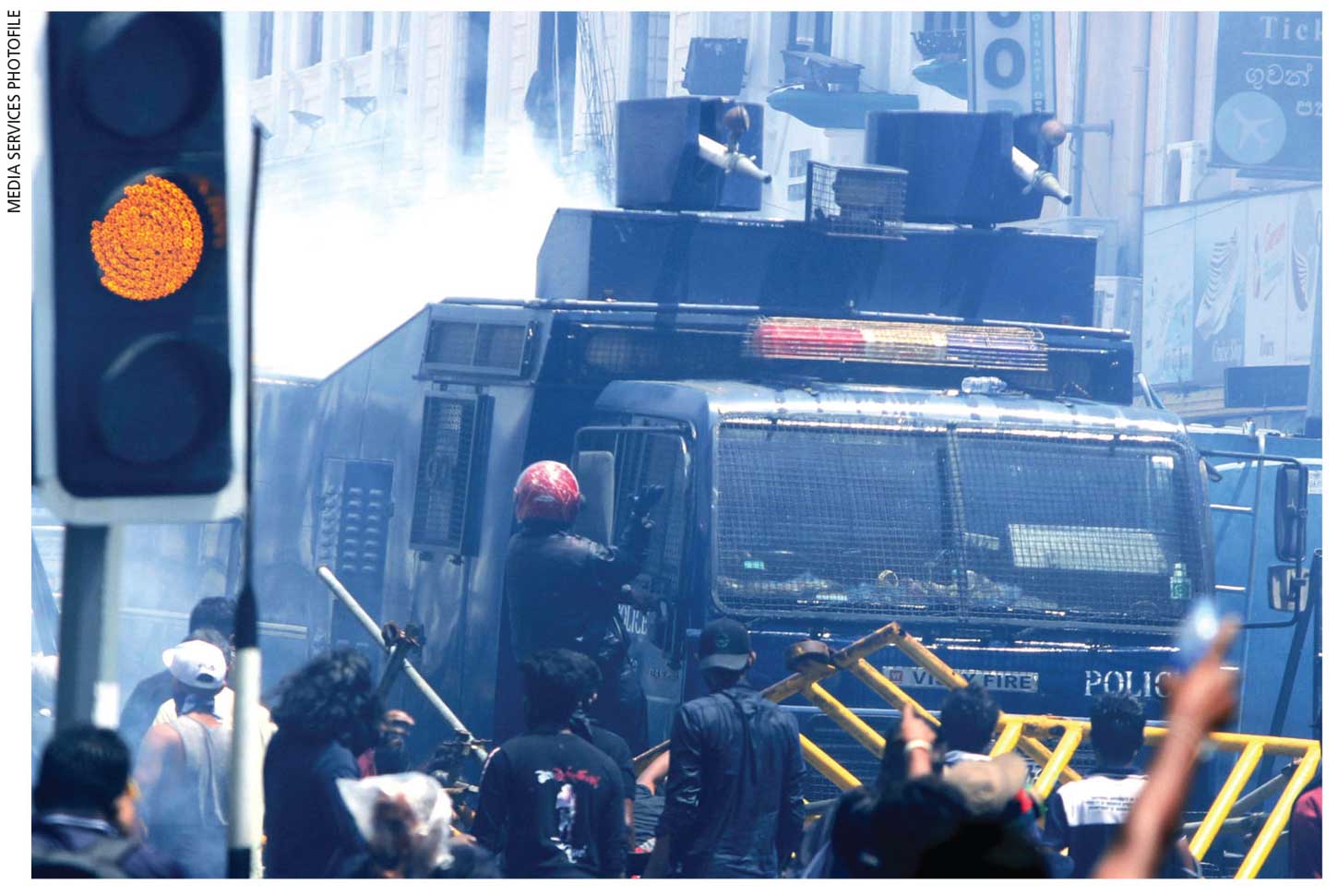SRI LANKA TODAY
PROBLEMS WITHOUT SOLUTIONS
Dr. Jehan Perera feels that quelling public opposition will be counterproductive
The government crackdown on protesters is a prominent feature of current governance that has provoked both national and international criticism. But the crackdown continues in the government’s self-interest. It sees the deterrence of future protests as key to its long stay in power. And it also wants to get back to the business of governing as soon as possible.
However, the government seems to have no idea of a solution to the overall national crisis. It doesn’t appear to have a serious issue with corruption and waste, and it is adept at discussing problems but not in presenting any solutions.
Of the maximum number of ministers who have been appointed, many stand accused of engaging in corruption and abuse of power. Only three months ago, when the protest movement was at its height, these ministers were driven out of office and now the public is seeing them back in government.
The reappointment of the same set of politicians who were in power under the former president and who failed to stop the economic crisis, isn’t inspiring hope for a socioeconomic solution.
Meanwhile, there are people who go to the kottu seller and buy a portion of dinner for the family, and leave their national identity card behind as surety since they don’t have the money to pay then and there. There is a need to be mindful that there is hatred against those who are blamed for having brought the country to this sorry situation.
This anger is growing as people find that even as they can’t feed their children, their rulers are continuing to demand and are receiving, positions and privileges.
There are only problems without solutions that are being presented to the people. The protests continue due to the ongoing decline in the economic situation that’s severely affecting the lives of the poorer sections of the population, and the lack of sensitivity on the part of the government to the people’s needs.
Due to the continuing crackdown on those who participated in the protest movement, there is no visible mass opposition to the government any more. This has created an impression of political stability.
The government has been effective in its efforts to quell public protests. It has done this by using the full force of the law against the protesters. The main legal weapon in the government arsenal is the Prevention of Terrorism Act (PTA), which was introduced as a temporary measure in 1979 to be used against the burgeoning Tamil insurrection.
Recently, the government has used it against some of the protest leaders, and disregarded both national and international objections by human rights groups and the UN system. Since the PTA doesn’t define the meaning of terrorism, the government seems to have added unarmed protests in its definition of the word.
The criminalisation of public protest by the government may explain why there is no sign of the protest movement coming to the fore again at this time, even though the economic conditions of the masses continue to steadily deteriorate.
As many as 4,000 persons connected to the protests and the acts of violence committed during those demonstrations, have either been arrested and bailed out or are yet in government custody. This includes a significant number who participated in the protests without engaging in violence.
With those who gave leadership to the protest movement behind bars or enlarged on bail after being charged, there is little possibility of public protests in the future on the scale that drove the previous president out of office and forced the resignation of the former government.
The only check on the government now, and in the short term, is international pressure. In the medium to long term, the challenge will come from the people themselves unless there’s a dramatic effort by the government to develop the country.
President Ranil Wickremesinghe has taken over the reins of state in which a principal feature is the expectation that he is the best suited for the job. Since his advent to power, prices have continued to rise and this has made life unsustainable for wide swathes of people who were surviving at the margins prior to the economic collapse.
The most optimistic scenario gives three to five years of economic hardship before there is a turnaround. More is expected of the president who has the experience and international credibility to make the future different from the past. He needs to consider whether two more years of repression without reform until the next elections fall due, is possible or desirable.




